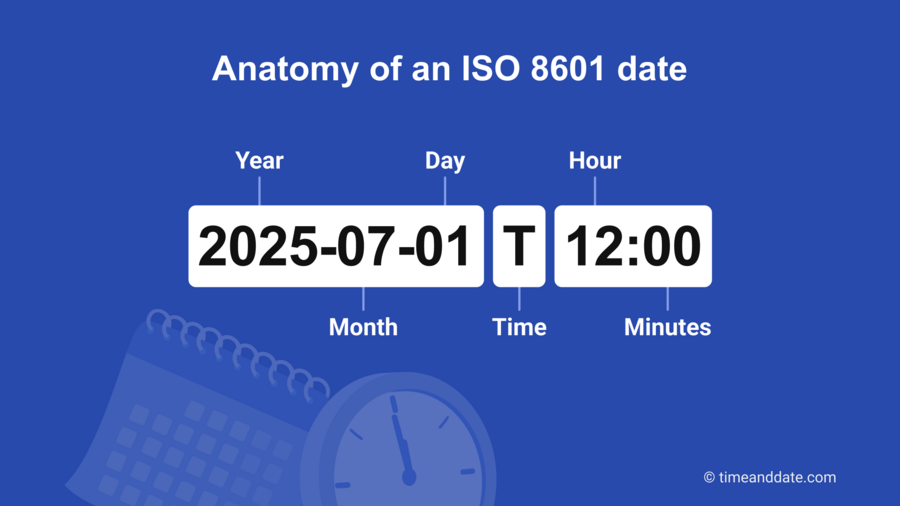
A Tool for Consistent Communication
The fact that dates are written differently around the world can cause confusion for people and computer systems. In Europe, for example, the standard is to write the date before the month: April 15th would be registered as 15/4. But in North America, the month is written first: 4/15.
And even the way dates are noted, using diverse separators like slashes, periods, or dashes, can create problems for applications.
Created by the International Organization for Standardization (ISO), a non-governmental authority that develops standards for products, services, and systems, ISO 8601 serves as a format that is free from the uncertainties written variations, time zones, and international boundaries can cause.
Because of this uniformity, ISO 8601 has been widely used in international communications, software development, APIs, databases, spreadsheets, calendar apps and scheduling systems.
Better Sorting
A big advantage of the ISO 8601 protocol is that it makes chronological sorting easier by listing dates and times from the largest to the smallest unit:
-
Year
-
Month
-
Day
-
Hour
-
Minute
-
Second
-
(Optional) Fractions of a second
Date: The ISO 8601 format is YYYY-MM-DD (year, month, day). For example, April 15, 2025 would be written 2025-04-15. The basic format omits separators: 20250415.
Time: Time is represented using a 24-hour clock, entered as hh:mm:ss (hours, minutes, seconds) with colons separating the elements. For example, 9:30 am would be written 09:30 or 09:30:00, if seconds are included.
Combined Date and Time: In this case, “T” is used as a separator: YYYY-MM-DDThh:mm:ss. For example, April 15, 2025 at 9:30 am would be 2025-04-15T09:30:00.
Time Zones in ISO 8601
ISO 8601 can indicate time zones using “Z” for UTC (Coordinated Universal Time) or by showing the offsets from UTC.
For example, April 15, 2025 at 9:30 am in UTC would be written: 2025-04-15T09:30:00Z
For non-UTC zones, the hours and minutes of the offset from UTC are indicated at the end of the string, like this: 2025-04-15T09:30:00+02:00.

Weeks by the Numbers
ISO 8601 measures all weeks as starting on Monday, and creates a system that tracks the year’s weeks numerically. Week 1 is defined as the week that contains the first Thursday of the year.
Calculate the week number for any weekIn some countries, this week number is an important reference point. In Norway, for example, communications about school holidays often refer to the week number only, omitting the calendar date. Messages such as “School holidays will begin this year in week 27” or “Winter holiday will be week 8” are commonplace.
About 55% of the world’s population start their week on a Sunday2019: New Version
In 2019, the International Organization for Standardization approved a new version of the protocol; ISO 8601-2.
This version improved extensions to time scale components to provide better precision and flexibility. It allows individual time shifts, and supports year ranges that extend beyond four digits, among other improvements.